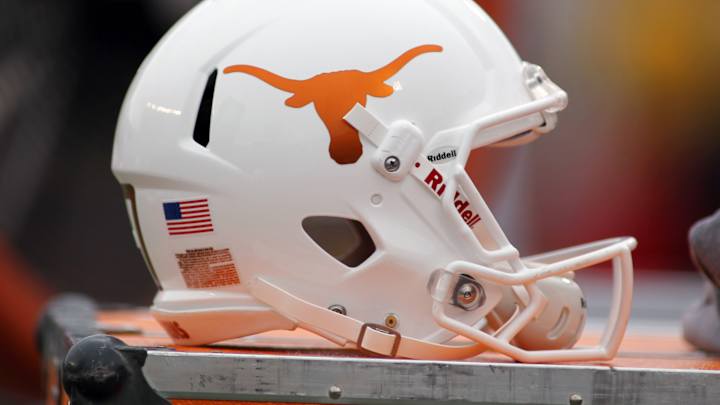What the new SEC could look like with Texas and Oklahoma

It's official: The Oklahoma Sooners and the Texas Longhorns will be moving into the SEC on July 1st, 2024, one year before their original move date.
"The presidents and chancellors of the SEC previously voted with unanimous approval to accept the application of Oklahoma and Texas to join the conference on July 1st, 2024, and have now authorized the conference office to proceed with facilitating the transition of Oklahoma and Texas to become full members of the Southeastern Conference on July 1st, 2024," SEC commissioner Greg Sankey said in an official statement released on Thursday afternoon.
There has been speculation as to how the SEC wants to approach the addition of OU and Texas as far as scheduling and division realignment goes - the conference met to discuss potential scheduling models in Destin, Florida last year but never came to a conclusion as to how football schedules would be created moving forward. There were over 30 models discussed.
A popular idea that was the primary topic of discussion surrounding this in Destin was the "3-6 model," a nine-game format that would allow a team to keep three set in stone conference opponents every season while rotating out the other six conference games every year. This would mean a student-athlete would be able to see every stadium and city the SEC has to offer if he were to stay for the entirety of his four-year (plus) eligibility.
Another model that was discussed was the "1-7 model" which would feature an eight-game format with one permanent opponent (likely a team's conference rival) and seven conference opponents that rotate out every season.
It's still unclear as to where the SEC is going to land - considering an extra conference game would mean more contract work with TV deals (would ESPN be willing to pay more for the additional games, etc.) - and the fact that the College Football Playoff's expansion is on the horizon. That may give some more pause as to how Sankey and the league office want to approach this.
Sports Illustrated's Ross Dellenger speculates that if the nine-game model were to be implemented (which seems more likely than any other model at this point), there would in fact be more revenue to come.
Dellenger released an article detailing the contract issues as well as the problems with the two most prominent model options (1-7 and 3-6). Instead of trying to explain his thoughts on the matter, I'll directly quote him here:
"A nine-game lineup has its issues. Teams don’t get that easy extra nonconference win, and they will have an uneven amount of league home games on alternate years. The format also means that games already scheduled years from now might need changing [...] the biggest issue, rising well above all others, is the selection of the three permanent opponents for each program. It is a most tricky and unenviable endeavor that is sure to tick off virtually every fan base in the conference."
Dellenger also notes that while the athletic directors of the league's individual schools may be able to give input on who they want as their permanent opponents, the conference officials will be the ones making the decisions.
The 3-6 model makes more sense on the surface, considering there are teams in the league that have rivalries extending past their one archrival. Auburn has Alabama and Georgia, Alabama has Auburn and Tennessee, and so on.
There are several that have tried their hand at predicting how the SEC would move forward with a 3-6 model. Here is what Dellenger and SI came up with:
- Alabama: Auburn; Tennessee; LSU
- Arkansas: Missouri; Texas; Kentucky
- Auburn: Alabama; Georgia; South Carolina
- Florida: Georgia; South Carolina; Oklahoma
- Georgia: Auburn; Florida; Kentucky
- Kentucky: Mississippi State; Arkansas; Georgia
- LSU: Ole Miss; Texas A&M; Alabama
- Mississippi State: Ole Miss; Kentucky; Texas A&M
- Missouri: Oklahoma; Arkansas; Vanderbilt
- Oklahoma: Texas; Missouri; Florida
- Ole Miss: Mississippi State; LSU; Vanderbilt
- South Carolina: Florida; Auburn; Tennessee
- Tennessee: Vanderbilt; Alabama; South Carolina
- Texas: Oklahoma; Texas A&M; Arkansas
- Texas A&M: LSU; Texas; Mississippi State
- Vanderbilt: Tennessee; Ole Miss; Missouri
Until the league announces how they want to build this schedule out, there's going to be some passionate discussion online about who should play who, what's fair, and why Vanderbilt loses in any situation (we love you, Commodores).
It also needs to be noted that some of the teams that currently feel comfortable with their East/West rotation may end up with a new set of schools they have to play every year - Kentucky getting Arkansas and Mississippi State shakes things up, as well as Florida getting Oklahoma (a wild road trip for either school, might I add) and Texas returning to their Southwest Conference days with Arkansas and A&M back on the schedule.
Sure, a model may be somewhat in place, but there's also the question of divisions. The Pac 12 and the ACC have already done away with their divisions, and it's possible that the new-look Big Ten removes them as well. Could the SEC decide to return to form pre-1992, before the conference split into the East and the West?
It would certainly be beneficial for teams like Missouri to not be pinned into an East division considering they're the third-furthest west in the SEC's current geographical footprint.
This seems like the best option the conference has right now. It will be interesting to watch how the move plays out over the next year, with more decisions surrounding scheduling and such to be made.
Related Stories
Five expectations for Auburn quarterbacks under Hugh Freeze
Auburn football's projected 2023 depth chart
Malik Autry commits to the Auburn Tigers
Hugh Freeze says QBs are hard to evaluate because of Auburn's offensive line play
Five-star PG Tahaad Pettiford commits to Auburn
Engage with Auburn Daily on Socials!
Follow Auburn Daily on Twitter
